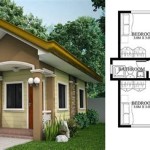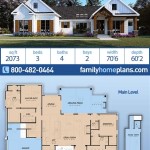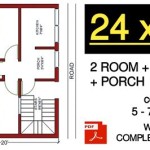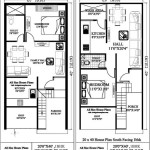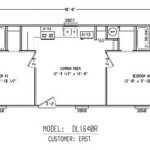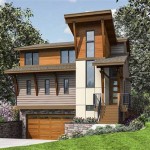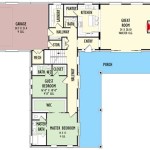28 Foot Wide House Plans: Design Considerations and Advantages
House plans with a width of 28 feet present a unique set of design challenges and opportunities. This dimension, while not overly restrictive, requires careful consideration of spatial relationships, functionality, and overall aesthetic appeal. It's a common width for both narrow lot developments and infill projects, appealing to builders and homeowners seeking efficient use of space without sacrificing essential amenities.
The relatively efficient span of 28 feet allows for cost-effective construction, particularly in terms of roof framing and structural support. However, maximizing the use of this space hinges on smart design choices that prioritize flow, natural light, and a sense of openness. Before embarking on a specific plan, it's critical to analyze the needs of the occupants, zoning regulations, and the surrounding environment.
Designing a 28-foot wide house requires balancing the desire for spaciousness with the inherent limitations of the width. Interior designers and architects use several techniques to create an illusion of greater space, including open floor plans, strategic placement of windows, and the use of light colors. Careful attention must also be paid to storage solutions to prevent clutter and maintain a clean, organized living environment.
Optimizing Interior Layout
The interior layout of a 28-foot wide house plan can follow several different models, each with its own advantages. One common approach is to create a central hallway that runs the length of the house, with rooms branching off on either side. This allows for a clear separation of spaces and can be particularly useful in multi-story dwellings. However, it can also lead to a sense of confinement if the hallway is not well-lit or properly proportioned.
Another approach is to adopt an open floor plan, where the living room, dining area, and kitchen flow seamlessly into one another. This creates a greater sense of spaciousness and can be ideal for entertaining. However, it also requires careful attention to zoning and furniture arrangement to define distinct areas within the open space. Sound control becomes particularly important in open floor plans, and considerations should be given to acoustic mitigation strategies.
In either case, the placement of the staircase is crucial. It should be located in a way that minimizes disruption to the flow of the house and maximizes the use of available space. A staircase tucked away in a corner can free up valuable floor area and create a more open feel. Alternatively, a strategically placed staircase can become a focal point of the design, adding visual interest and character to the home.
The number of bedrooms and bathrooms will significantly impact the overall layout. A 28-foot wide house can typically accommodate three bedrooms on the upper floor, along with two bathrooms. However, this may require compromises in the size of the rooms or the allocation of storage space. Careful planning is essential to ensure that each room meets the needs of its occupants while maintaining a comfortable and functional living environment.
Exterior Design Considerations
The exterior design of a 28-foot wide house plan should complement the interior layout and reflect the overall aesthetic of the home. The facade should be visually appealing and well-proportioned, with careful attention paid to the placement of windows, doors, and other architectural features. The materials used should be durable and weather-resistant, and should also contribute to the overall energy efficiency of the house.
The roofline is a critical element of the exterior design. A simple gable roof is a common choice for 28-foot wide houses, as it is cost-effective and relatively easy to construct. However, other roof styles, such as a hip roof or a shed roof, can also be used to create a more unique and visually interesting design. The pitch of the roof should be carefully considered, as it will affect the overall height of the house and the amount of attic space available.
The location of the garage is another important consideration. A front-facing garage can be convenient, but it can also detract from the curb appeal of the house. A side-entry garage or a detached garage can be a more aesthetically pleasing option, but it may require a larger lot. Alternatively, a carport can provide covered parking without the need for a fully enclosed garage.
Landscaping plays a crucial role in enhancing the exterior appearance of a 28-foot wide house. Trees, shrubs, and flowers can add color, texture, and visual interest to the landscape, and can also help to soften the lines of the house and create a more inviting atmosphere. Careful planning is essential to ensure that the landscaping complements the architecture of the house and enhances its overall curb appeal.
Maximizing Natural Light and Ventilation
Given the potential for a narrower floor plan to feel dark, maximizing natural light is paramount in 28-foot wide house designs. Large windows, strategically placed skylights, and light wells can all be employed to bring daylight into every corner of the home. The orientation of the house on the lot should be considered to take advantage of southern exposure for passive solar heating in the winter and shading in the summer.
The placement of windows should also take into account the prevailing wind direction. Windows on opposite sides of the house can create a cross breeze, which can help to naturally ventilate the home and reduce the need for air conditioning. Operable windows should be chosen carefully to ensure that they provide adequate ventilation without compromising security or energy efficiency.
Light colors and reflective surfaces can help to maximize the amount of natural light in the house. Light-colored walls, ceilings, and floors will reflect light and make the space feel brighter and more open. Mirrors can also be used to reflect light and create the illusion of greater space. Strategic placement of mirrors can significantly enhance the sense of spaciousness in a narrow home.
The use of natural materials can also contribute to a sense of warmth and comfort in the home. Wood, stone, and brick can add texture and character to the interior design, and can also help to create a connection to the outdoors. Plants can also be used to bring life and color into the home and purify the air. Carefully selected greenery can soften the edges of a narrow space and create a more inviting atmosphere.
In summary, designing a successful 28-foot wide house plan requires careful consideration of the interior layout, exterior design, and strategies for maximizing natural light and ventilation. By paying attention to these key factors, it is possible to create a beautiful, functional, and comfortable home that makes the most of its available space.

28 Wide 3 Bed House Plan With 2 Story Living Room 22339dr Architectural Designs Plans

28 Foot Wide Modern Home Plan Under 1400 Square Feet 28060j Architectural Designs House Plans

28 Foot Wide Urban Bungalow Under 1900 Square Feet 80993pm Architectural Designs House Plans

The Best 30 Ft Wide House Plans For Narrow Lots Houseplans Blog Com

28x32 House 2 Bedroom 1 Bath 848 Sq Ft Floor Plan Instant Model 2f

28x30 N House Plan 840 Sq Ft Home Building Design

House Plan 28 20 Belk Design And Marketing Llc

The Best 30 Ft Wide House Plans For Narrow Lots Houseplans Blog Com

Narrow Lot House Plans Modern Luxury Waterfront Beach

28 X 18 Small Budget House Under 500 Square Feet

